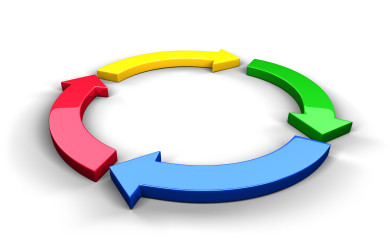Diets are everywhere. You can’t turn two pages into any fitness magazine without running into some new and successful method of instilling discipline into your daily nutritional intake. This, of course, comes on top of the already massively popular diets such as Keto, Paleo, Atkins, and anything else that rings a bell to even the most novice of fitness-oriented individuals. Proponents of each of these diets swear by their method, and debates are constantly taking place in hopes of settling the score. However, what most people miss is that for the average person none of these diets matter in a way that makes one better than the next. Generally speaking, regardless of the particular diet you may choose to follow, as long as you control your food intake in a way that meets your specific daily caloric goals, the rest is irrelevant. Sure, one diet may suit you better than another in terms of convenience, but ultimately every diet must be married to the same fundamental concept to work: Calories In vs. Calories Out. Because you can’t beat the laws of thermodynamics with one diet and not another, every diet will work so long as it consistently allows you to maintain your necessary daily caloric goals.
The only way these diets differ, at least the traditionally popular diets out there, is in the way they shift the macro nutrient ratios that make up the daily calorie counts. Some will have you eat a low amount of carbohydrates, making up the caloric deficit with fat and protein. Others will provide you with a more even split of proteins, carbohydrates, and fats. Outside of this, however, their goals are identical: controlling your food intake in a way that meets your desired goals. If you wish to lose fat, eating slightly below your maintenance calories will do the trick. If you wish to gain muscle, eating slightly above your maintenance calories will do the same (assuming you’re stimulating muscle growth by weight lifting). It really is that simple. Now, does that mean that the buck stops there? Not necessarily. There is support out there for the belief that carb cycling may provide an additional boost to your results. Let’s digest the theory under which timing your carb intake may prove extra beneficial.
Although the basic principle of calories in vs. calories out governs, rarely do people mention the role insulin plays in shaping an individual’s results. Insulin is a hormone the pancreas releases after you eat a meal. It is, in essence, a traffic coordinator inside your body because it tells the body what to do with the calories you’ve just eaten. Instead of burning the stored fat in your body for energy, insulin tells your body to burn the food you just ate for energy. There is inherently nothing wrong with that. That’s how the body is supposed to function. However, carbohydrates have a somewhat greater effect on insulin than proteins or fats. When we eat a carbohydrate-rich meal, our blood sugar levels increase because the carbohydrates are broken down into sugar (glucose). Insulin moves this sugar from the blood into the muscles and fat cells for storage. The problem? Insulin levels peak later than our blood glucose levels. This draws two important conclusions. One, the fact insulin levels remain higher for a longer duration of time than is necessary potentially directly impacts our total caloric intake by making us crave more food not long after eating a high-carb meal (this is only a problem if you give in to the cravings). Two, there is a controversial belief that this insulin time-lag impedes how quickly the body returns to burning stored fat for energy.
Why does this latter point prove detrimental? This insulin spike time-lag deters the burning of stored fat in our bodies. This impedes fat burn, even in a caloric deficit. Keeping insulin low, therefore, diminishes the potential for this stubborn fat phenomenon. The problem with this theory, however, is what exactly is the body using for energy during this “lag” period? If it has burned all the energy available from your food intake, it should logically follow that it will move on to burning your stored fat for energy. Nonetheless, even if this second point is debatable, the first stands strong. That alone should be convincing enough to treat insulin-moderation seriously. If moderating insulin activity does have these benefits, the obvious question then, is why is keto not preferred? The mere fact carbohydrates have this potential impact on our insulin levels does not mean that they should not be included in our diets to a greater degree than the keto diet allows. There is a difference between having little to no carbohydrates, too much carbohydrates, and just the right amount. The first is unnecessary, the second is detrimental (due to increased cravings, at the very least).
Carb cycling allows the type of moderation that avoids the energy shortage pitfalls of the keto diet, while taking advantage of the positive effects on insulin of lower daily carbohydrate intake. Furthermore, the insulin spike isn’t all that bad either. Insulin promotes the transport of sugar (from carbohydrates) and amino acids (from protein) into muscle. Carb cycling allows you to time that insulin spike at the appropriate moment, post-workout, for maximum repair and growth of your muscles. In addition, even eating complex carbohydrates lowers the insulin response to some extent (within the carbohydrate category), further eroding the need for jumping on keto.
Carb cycling is implemented in two main ways: either intra-day or inter-day. Intra-day carb cycling involves ingesting carbohydrates only around the pre-workout and post-workout timeframe. This is meant to provide quick energy for the higher level of activity, allow the increased energy to be used during the activity (not stored), and to take advantage of insulin’s transport of protein to damaged muscle. Inter-day carb cycling involves ingesting greater amounts of carbohydrates on workout/higher activity days and imitating a keto-style approach on off/low activity days. This means off days will have little to zero carb intake, and workout days will either follow the intra-day schedule or have continuous carbohydrate intake throughout the day. Which one you prefer doing is up to you, you can always mix and match as well. The one thing you need to understand is that carbs are not evil, there just may be some benefits to playing around with the amount and/or timing of their intake. For someone who has reached a plateau and has never tried carb cycling, doing so may serve as a breakthrough that can enable further progress. For another individual, carb cycling may make no difference as long as the maintenance calorie objectives are reached. Whether it may provide additional benefits is for you to test. It certainly won’t hurt you, but only by giving it a go can you find out whether it helps.







